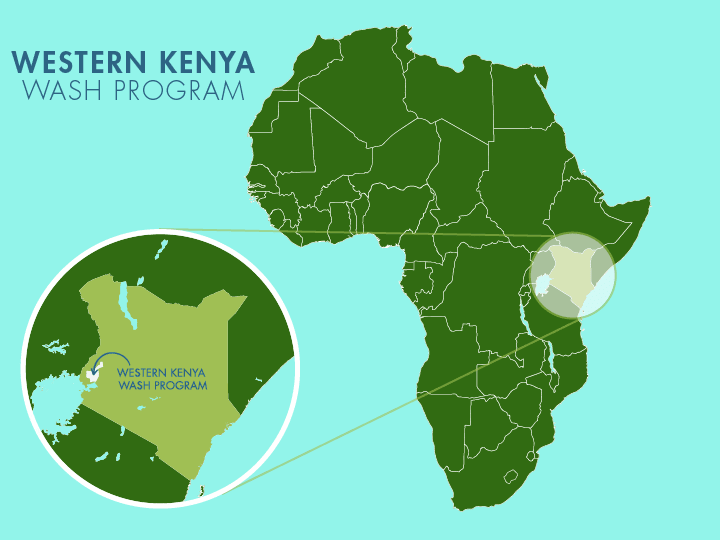For the 70 people who call the Teresia Community home, Wamalika Spring was once a reliable lifeline. Today, it's falling apart. The spring floor and stairs are crumbling, the walls are damaged, and one of the pipes no longer delivers water at all. Collecting water has become slow, difficult, and even risky.

"The spring is severely damaged, especially at [the] collection point. The floor is totally worn out. The stone pitching is also severely damaged. The stairs have been damaged. The backfilled area is eroded, and it seems the black paper that is used to cover the stones is also worn out," shared Field Officer Mitchelle Alusi, noting the spring's state.

The spring's poor condition leads to long wait times -- time that community members can't afford to waste.
Joy, 11, is very familiar with the frustration of waiting to collect water when she would rather be doing other critical things, like learning.
"Long queues due to the spring serving a lot of people, especially when there are no rains. We are trained to obey and respect our elders. When our parents or people whom we refer [to] as parents come to fetch water, we give them first priority," shared Joy.

Joy collecting water.
"Although the spring serves many people, some people are rowdy and rude. One time, I was late to school, and we were told to carry water to school. I went directly to the water point and found a certain woman fetching water, and [she] felt sorry for me. She allowed me to fetch water, but her friend couldn't allow saying [that] children should wait for older people to finish fetching water," Joy continued.
"I feel bad when I think about the long queues," she lamented.

Before Joy's school installed a well, she struggled to find water to meet her needs throughout the day. She would have to leave class to find and collect water while at school and then face the same hardship again once she arrived home, limiting her ability to play, study, and rest in the evenings.
"It used to have a great negative impact at school before a borehole was done. Here at home [I] am supposed to do my homework on time, [which] is sometimes affected when we take long [times] at the water point," said Joy.
Joy has hopes for the future, but those dreams are paused without access to safe, sufficient water that she can collect efficiently.

Joy.
When asked about her dreams, she said she plans to "Work hard to become a teacher and make my dad proud."
This spring can be restored with proper protection and repair so people can quickly and efficiently collect clean water. This will allow Joy to regain her valuable time to study and reach for her dream of becoming a teacher.
Spring Protection
Springs are natural water sources that originate from deep underground. As water travels through various layers of the earth, it undergoes a natural filtration process, making it cleaner and safer to drink. To protect these spring sources from contamination, we construct a waterproof cement structure around layers of clay, stone, and soil. This design channels the spring water through a discharge pipe, facilitating easier, faster, and cleaner water collection.
Chlorine Dispenser
As an extra measure towards water quality safety, uniquely engineered chlorine dispensers are installed at all of our spring protection projects so community members can treat their water with pre-measured doses of chlorine. The chlorine treats any possible contamination and stays active for two to three days, ensuring water stays safe to use even when stored at home. Chlorine delivery and maintenance of the dispensers are part of our ongoing community support.
Community Education & Ownership
Hygiene and sanitation training are integral to our water projects. Training is tailored to each community's specific needs and includes key topics such as proper water handling, improved hygiene practices, disease transmission prevention, and care of the new water point. Safe water and improved hygiene habits foster a healthier future for everyone in the community. Encouraged and supported by the guidance of our team, a water user committee representative of the community's diverse members assumes responsibility for maintaining the water point, often gathering fees to ensure its upkeep.

 Protected Spring
Protected Spring
 Rehabilitation Project
Rehabilitation Project


















